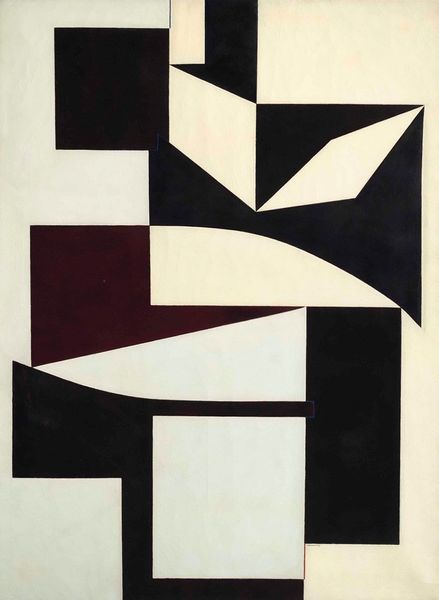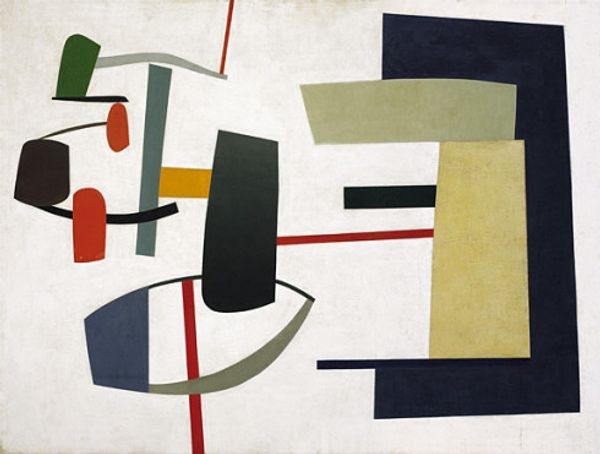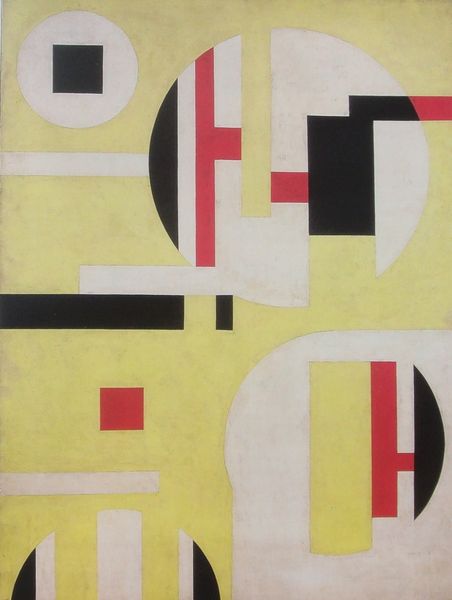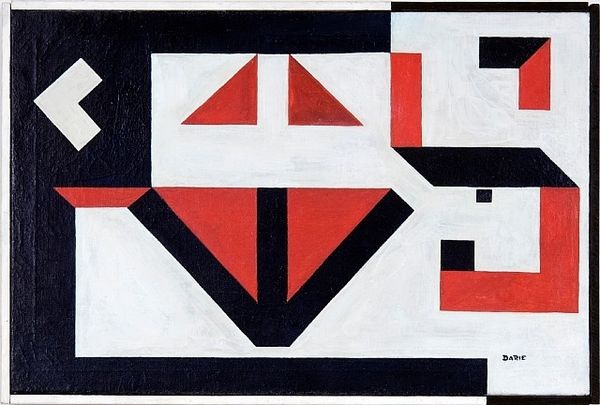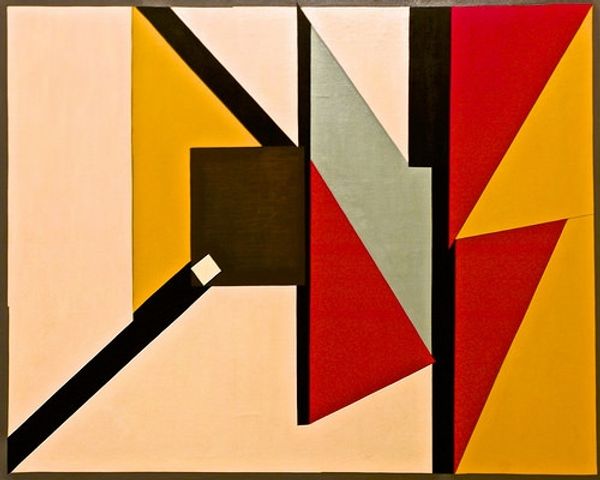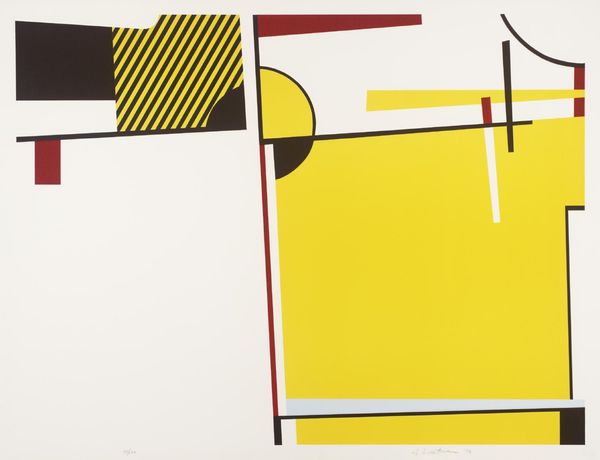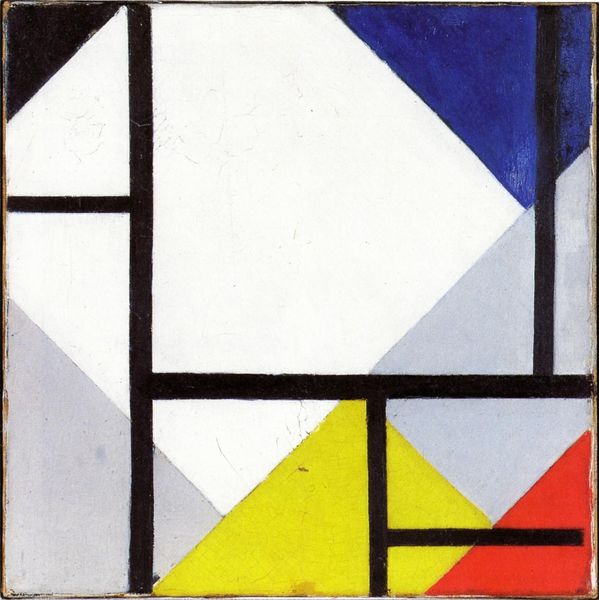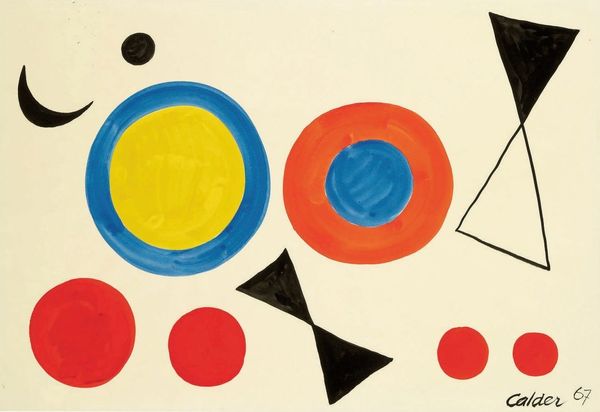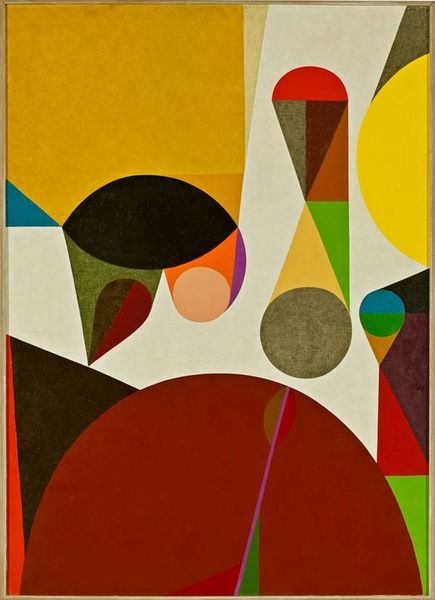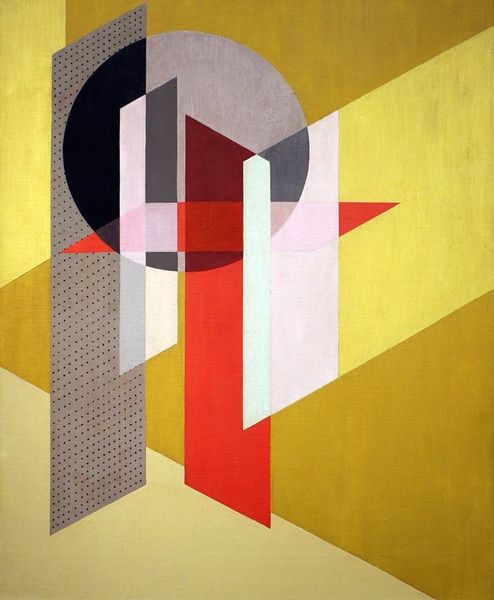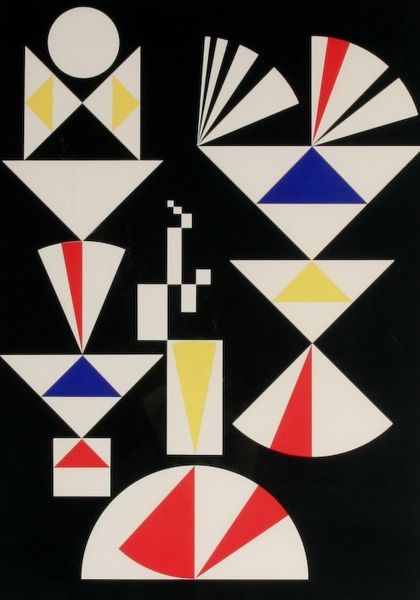
acrylic-paint
#
abstract painting
#
pop art
#
constructivism
#
acrylic-paint
#
geometric pattern
#
acrylic on canvas
#
geometric
#
geometric-abstraction
#
abstraction
#
line
#
modernism
Copyright: Sandu Darie,Fair Use
Editor: We're looking at "Untitled," a 1955 acrylic on canvas by Sandu Darie. It’s this fascinating array of geometric shapes in primary colors, kind of like a deconstructed flag. What jumps out to you? Curator: The way Darie uses these basic materials, acrylic and canvas, is critical. The 'Untitled' nature points away from narrative, centering the experience on the labor of applying paint and arranging forms. Editor: So it’s less about what it represents and more about…how it was made? Curator: Precisely. Think about post-war manufacturing. This echoes the industrial process – the colors are almost like mass-produced components, arranged according to a system. Editor: Like an assembly line of shapes? The grid almost feels like that. Was that a common sentiment in art back then? Curator: Many artists questioned the divide between “high art” and craft. Examining the role of the artist as a laborer, and pushing back on the commercialization of art. Are we still beholden to those divisions, now? Editor: It does feel like this pushes boundaries between painting and graphic design, in some ways making you consider how art fits into a broader economic structure. The artist isn't some removed genius, but a producer, working with readily available supplies, right? Curator: Yes! Considering this work this way changes how we understand not just what we are looking at, but why. Editor: Exactly. It makes you think about the context of artistic production and the materials artists use to make meaning. Curator: And how art, even abstraction, is never really "untouched" by the society that creates and consumes it.
Comments
No comments
Be the first to comment and join the conversation on the ultimate creative platform.
